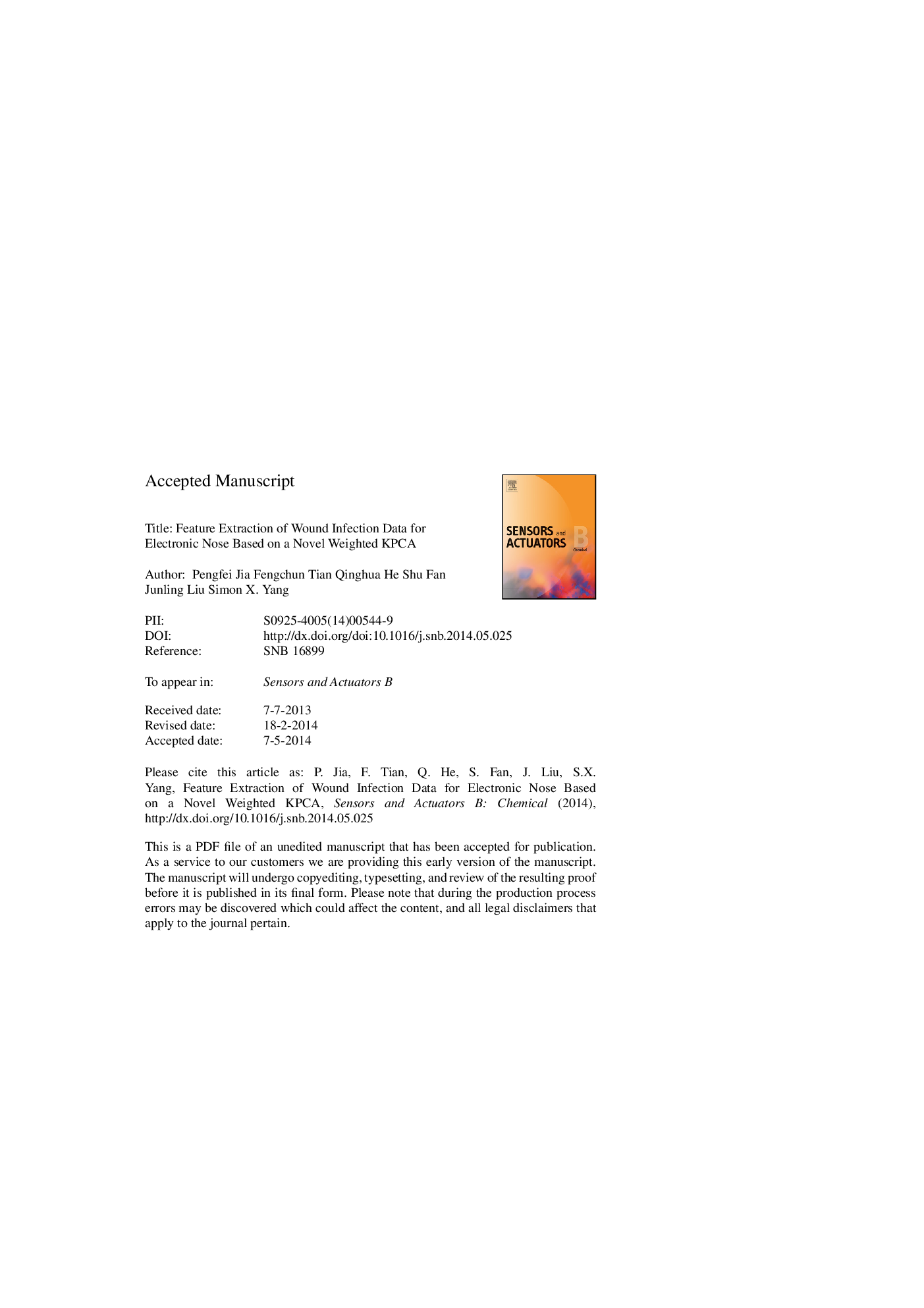| Article ID | Journal | Published Year | Pages | File Type |
|---|---|---|---|---|
| 7146927 | Sensors and Actuators B: Chemical | 2014 | 41 Pages |
Abstract
When an electronic nose (E-nose) is used to predict the classes of wound infection, its result is not ideal if the original feature matrix extracted from the response of sensors is put into the classifier directly. To acquire more useful information which can improve E-nose's classification accuracy, we present a novel weighted kernel principal component analysis (KPCA) method to process this matrix. In addition, we have also compared it with other existing methods including independent component analysis (ICA), orthogonal signal correction (OSC), locality preserving projections (LPP), principal component analysis (PCA), KPCA and the traditional weighted KPCA. The odors of four different classes of wounds (uninfected and infected with Staphylococcus aureus, Escherichia coli, and Pseudomonas aeruginosa) are used as the original response of E-nose. Experimental results have demonstrated that the proposed weighted KPCA method outperforms other feature extraction methods.
Related Topics
Physical Sciences and Engineering
Chemistry
Analytical Chemistry
Authors
Pengfei Jia, Fengchun Tian, Qinghua He, Shu Fan, Junling Liu, Simon X. Yang,
